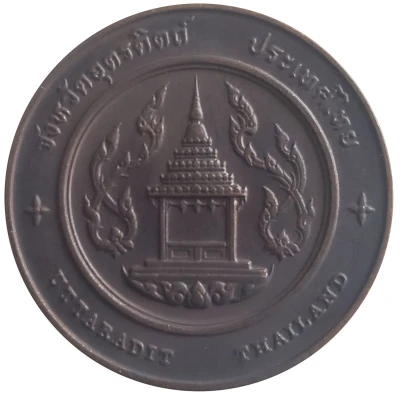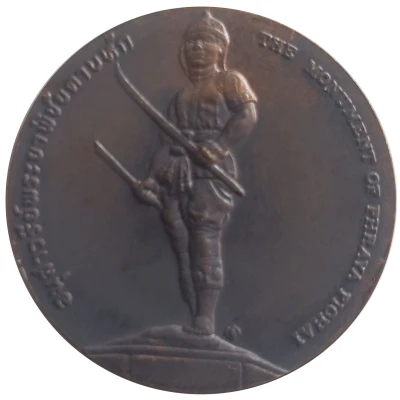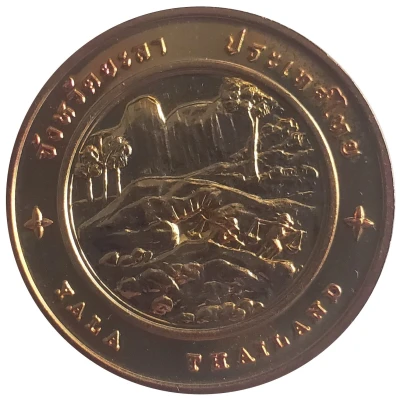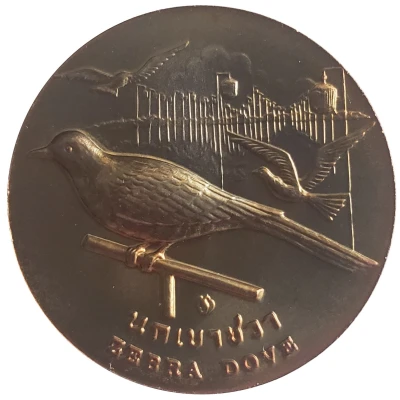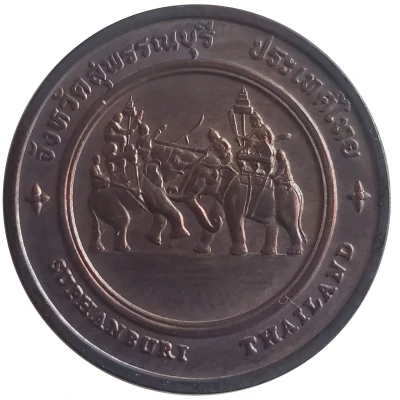
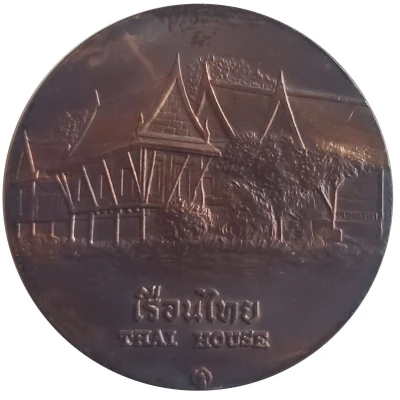

© Micheal Linke
Medal - Suphanburi Province ND
| Copper | 8.5 g | 25 mm |
| Location | Thailand |
|---|---|
| Type | Medals › Souvenir medallions |
| Composition | Copper |
| Weight | 8.5 g |
| Diameter | 25 mm |
| Shape | Round |
| Technique | Milled |
| Orientation | Medal alignment ↑↑ |
| Updated | 2024-11-13 |
| Numista | N#336036 |
|---|---|
| Rarity index | 95% |
Reverse
Traditional Thai homes, on stilts.
Script: Thai
Lettering:
เรือนไทย
THAI HOUSE
Edge
Plain
Comment
Obverse:The duel between King Naresuen and Mingyi Swa.
Elephant battle between Naresuan and Mingyi Swa as wall murals in Phra Ubosot, Wat Suwan Dararam, Ayutthaya, Thailand.
In November 1592, Nanda Bayin ordered his son to attack Ayutthaya again. Mingyi Swa, Natshinnaung the son of the viceroy of Taungoo, and the viceroy of Prome formed three divisions. Mingyi Swa went through Three Pagodas Pass while the other two divisions came via Mae Lamao. The chief of Chiang Mai sent a boat force. Naresuan had been planning to attack Cambodia because of its border incursions, but then adjusted to the Burmese threat. Naresuan marched towards Suphan Buri and encamped his armies at Nong Sarai near the Thakhoi River. Naresuan formed a battle plan which involved a retreat, allowing the Burmese to follow, and then attack the disordered advance with his main army.
During the battle, in January 1593, the war elephants of Naresuan, Chaophraya Chaiyanuphap, and Ekathotsarot, Chaophraya Prap Traichak, were "in musth" and charged into the midst of the Burmese, with only a handful to Siamese being able to follow them in. According to Damrong's reconstruction, Naresuan, seeing Mingyi Swa on an elephant under a tree, shouted, "My brother, why do you stay on your elephant under the shade of a tree? Why not come out and engage in single combat to be an honour to us? There will be no kings in future who will engage in single combat like us.
The personal battle between Naresuan and Mingyi Swa was a highly romanticized historical scene known as the "Elephant Battle" - สงครามยุทธหัตถี Songkram Yuddhahatthi.
After a prolonged duel and narrowly missing Naresuan but cutting his helmet, Naresuan was able to cut Mingyi Swa with his ngao. Prince Somdet Phra Ekathotsarot was also able to kill the governor of Muang Chacharo. The main Siamese army then arrived and the Burmese were routed and scattered. The King of Bago then ordered the other two divisions to retreat.
https://en.m.wikipedia.org/wiki/Naresuan
Reverse:
Thai House
Thai stilt houses in the central region are divided into five types. The first type is the single house, which is the stilt house for a single family and includes bedroom and kitchen. The second type is a group house, which is the stilt house that has at least two buildings in the same area. The next type is the official house or stilt house for government officer. “Pathway store” and “waterfront” store stilt houses are the type of stilt houses that are built for trading. The final type is the raft house which is built near the coast or a river.
The structure of the stilt house in the central region is the most common and of very simple style. The high gable roof which in its center has a shape like the halo of the sun is the most outstanding structure, where there is a space for cooking smoke to flow out. The long overhanging eaves can protect from sun or rain. The wide terrace outside the house is suitable for summer use. In addition, a more important structure is the high open space under the house which is supported by many poles. This space is the area for storage of tools or agricultural equipment, parking, eating meals and other activities.
https://en.m.wikipedia.org/wiki/Traditional_Thai_house
